cosmological principle
description: notion that the spatial distribution of matter in the universe is homogeneous and isotropic at large scales
30 results
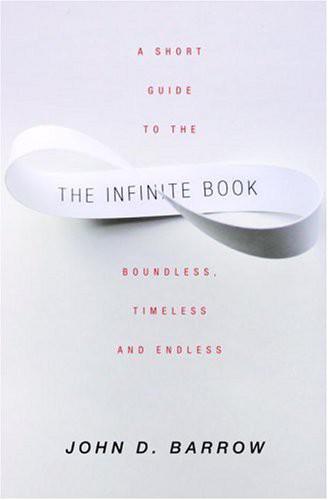
The Infinite Book: A Short Guide to the Boundless, Timeless and Endless
by
John D. Barrow
Published 1 Aug 2005
Descartes, Principles of Philosophy, 26, quoted in M. Blay, Reasoning with the Infinite, University of Chicago Press, 1993, p. 9. 24. Descartes, op. cit., 26, quoted in Blay. 25. Ibid., 27, quoted in Blay. 26. For further discussion and references see J.D. Barrow and F.J. Tipler, The Anthropic Cosmological Principle, Oxford University Press, 1986, chap. 2, n. 245. 27. We do not (and neither do theologians it seems) dwell on the distinctions that are possible regarding the size of infinite sets. 28. N. Cusa, On Learned Ignorance, trans. J. Hopkins, Banning Press, Minneapolis, 1985, original pub. 1444. 29.
…
The assumption that life has a zero probability of emerging by natural processes would be tantamount to ascribing it to special creation or ‘intelligent design’. 13. Quarterly Journal of the Royal Astronomical Society 20, 37–41 (1979). 14. Ecclesiastes 1v9. 15. See P.C.W. Davies, Nature 273, 336 (1978) and J.D. Barrow & F.J. Tipler, The Anthropic Cosmological Principle, Oxford University Press, Oxford, 1986. 16. S. Webb, Where is Everybody?, Copernicus, New York, 2002. 17. A. Linde, ‘The Self-reproducing Inflationary Universe’, Scientific American 5, 32 (May 1994); A. Vilenkin, Physics Letters B 117, 25 (1982). 18. Quoted in E. Maor, To Infinity and Beyond; a cultural history of the infinite, Princeton University Press, 1987, p. xiii. 19.
…
However, it is interesting that human altruistic behaviour, especially that to which many people aspire and even more people admire, goes far beyond this minimal tit-for-tat altruism that arises for selfish reasons. It is only superficially altruistic. 24. J.D. Barrow and F.J. Tipler, The Anthropic Cosmological Principle, Oxford University Press, 1986 and J.D. Barrow, The Constants of Nature, Jonathan Cape, London, 2002. chapter nine Worlds Without End 1. I. Newton, Opticks, Prometheus, New York, 1952 (based on 4th edn, London, 1730), pp. 400–4. 2. C.S. Lewis, The Lion, The Witch and The Wardrobe, Penguin, Harmondsworth, 1976 edn, p. 49. 3.
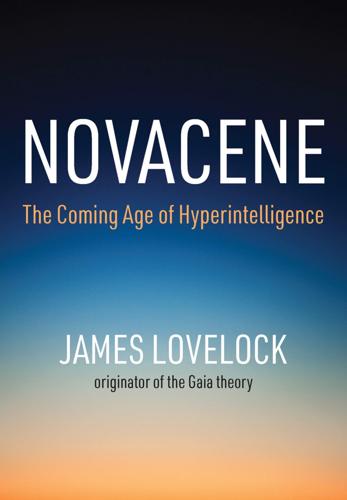
Novacene: The Coming Age of Hyperintelligence
by
James Lovelock
Published 27 Aug 2019
Perhaps because I was brought up as a Quaker, I do not have a literal view of religion – I accept much of its wisdom but not necessarily the truth of the stories. I now think that this religious view of humanity as chosen may express a deep truth about the cosmos. This thought was first inspired by a book published in 1986 entitled The Anthropic Cosmological Principle by two cosmologists, John Barrow and Frank Tipler. The first effect of Barrow and Tipler's book was to throw up fireworks of doubt in my mind about the scientific principle of cause and effect. Latterly I have realized that I have never really been a pure scientist, I have been an engineer.
…
We alone, among the billions of species that have benefited from the flood of energy from the Sun, are the ones who evolved with the ability to transmute the flood of photons into bits of information gathered in a way that empowers evolution. Our reward is the opportunity to understand something of the universe and ourselves. If the anthropic cosmological principle rules, as I think it may, then it seems that the prime objective is to convert all of matter and radiation into information. Thanks to the wonders of the age of fire, we have taken the first step. We now stand at a critical moment in this process, the moment when the Anthropocene gives way to the Novacene.
…
Must we fear the future and the surprises the Novacene might bring? I do not think so. This epoch will mark the end of what is to us nearly 4 billion years of biological life on this planet. As humans with emotions, surely it is something of which we should be proud as well as sad. If John Barrow and Frank Tipler (The Anthropic Cosmological Principle ) are right and the universe exists to produce and sustain intelligent life, then we are playing a part like that of the photosynthesizers, organisms that set the scene for the next stage of evolution. The future is, for us, unknowable, as it always has been, even in an organic world. Cyborgs will conceive cyborgs.
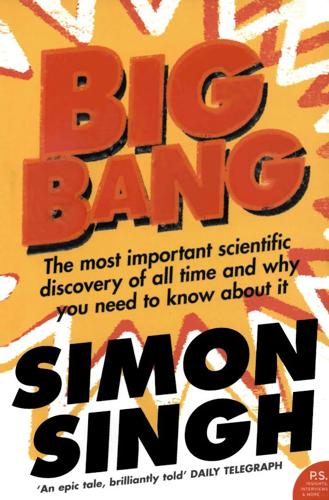
Big Bang
by
Simon Singh
Published 1 Jan 2004
But Einstein reduced his task to a manageable level by making a single simplifying assumption about the universe. Einstein’s assumption is known as the cosmological principle, which states that the universe is more or less the same everywhere. More specifically, the principle assumes that the universe is isotropic, which means that it looks the same in every direction—which certainly seems to be the case when astronomers stare into deep space. The cosmological principle also assumes that the universe is homogeneous, which means that the universe looks the same wherever you happen to be, which is another way of saying that the Earth does not occupy a special place in the universe.
…
In short, if the universe was infinite, then it could double in size and remain infinite and unchanged, as long as matter was created in between the galaxies, as shown in Figure 86. All cosmological thinking had previously been guided by the cosmological principle, which stated that our bit of the universe, the Milky Way and its environs, is essentially the same as anywhere else in the universe. In other words, we do not inhabit a special place in the universe. Einstein exploited this principle when he first applied general relativity to the whole universe. Gold, however, was going one step further and postulated the perfect cosmological principle: not only is our patch of the universe the same as any other patch, but our era in the universe is the same as any other era.
…
Stellar parallax is used in astronomy to measure the distance to the closest stars. parsec A unit of distance used in astronomy, equal to about 3.26 light years. Short for ‘parallax second’, it is the distance at which an object would show a stellar parallax of one arcsecond. A distance of 1 million parsecs is known as 1 megaparsec (Mpc). perfect cosmological principle An extension of the cosmological principle which states that the universe is not only homogeneous and isotropic, but also unchanging with time. This principle is the basis of the Steady State model. plasma A high-temperature state of matter in which atomic nuclei become separated from their electrons. primeval atom theory Georges Lemaître’s early version of the Big Bang model in which all the atoms in the universe were originally contained in one compact ‘primeval atom’.
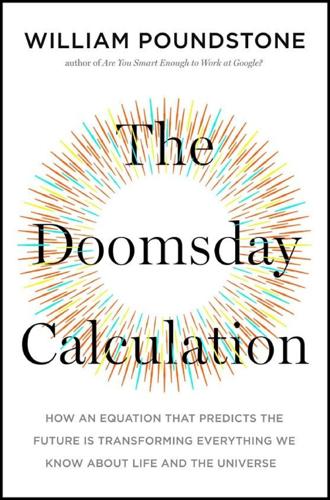
The Doomsday Calculation: How an Equation That Predicts the Future Is Transforming Everything We Know About Life and the Universe
by
William Poundstone
Published 3 Jun 2019
A History of Grim Reckoning 1. “So I picked up the New York Times”: Gott interview, July 31, 2017. 2. “Copernican Cosmological Principle” in 1952 book: Bondi 1952. 3. “Copernicus taught us the very sound lesson”: Carter 1974. 4. Eddington’s fishnet example: Eddington 1939, 16–37. 5. “Whenever one wishes to draw general conclusions”: Carter 2004, 2. 6. “Anthropic notions flourish in the compost”: Brown 1988, a review of John D. Barrow and Frank J. Tipler’s The Anthropic Cosmological Principle. 7. Physicists hissed: See Tegmark 2014, 144, which cites an incident at the Fermilab in 1998. 8. “not something that I would be prepared”: Carter 1983, 141. 9.
…
He was just trying to figure out how the solar system worked. Only in the mid-twentieth century did it become common to draw an explicit analogy between Copernicus’s heliocentric solar system and later astronomical assumptions of an uncentered universe. Physicist Hermann Bondi used the term “Copernican Cosmological Principle” in a 1952 book. By the time of Gott’s 1969 visit to the Berlin Wall, it was natural (for an astrophysicist) to attach Copernicus’s name to a method with only a metaphoric connection to the Polish astronomer. One of those speaking at Kraków came to bury, not praise, Copernicus-as-metaphor.
…
“Failure Rates for New Canadian Firms: New Perspectives on Entry and Exit.” Ottawa: Statistics Canada (2000). Ball, John A. “The Zoo Hypothesis.” Icarus 19 (1973): 347–349. Barrat, James. Our Final Invention: Artificial Intelligence and the End of the Human Era. New York: St. Martin’s, 2013. Barrow, John D., and Frank J. Tipler. The Anthropic Cosmological Principle. New York: Oxford University Press, 1986. Bartha, Paul, and Christopher Hitchcock. “No One Knows the Date or the Hour: An Unorthodox Application of Rev. Bayes’s Theorem.” Philosophy of Science (Proceedings) 66 (1999): S329–S353. . “The Shooting-Room Paradox and Conditionalizing on Measurably Challenged Sets.”

From eternity to here: the quest for the ultimate theory of time
by
Sean M. Carroll
Published 15 Jan 2010
The idea that matter is smooth on large scales can be elevated into the “Cosmological Principle”: There is no such thing as a special place in the universe. But it seems clear that there is a special time in the universe: the moment of the Big Bang. Some mid-century cosmologists found this stark distinction between smoothness in space and variety in time to be a serious shortcoming of the Big Bang model, so they set about developing an alternative. In 1948, three leading astrophysicists—Hermann Bondi, Thomas Gold, and Fred Hoyle—suggested the Steady State model of the universe.43 They based this model on the “Perfect Cosmological Principle”—there is no special place and no special time in the universe.
…
Communications in Mathematical Physics 31 (1973): 161-70. Barrow, J. D., Davies, P. C. W., and Harper, C. L. Science and Ultimate Reality: From Quantum to Cosmos, honoring John Wheeler’s 90th birthday. Cambridge: Cambridge University Press, 2004. Barrow, J. D., and Tipler, F. J. The Anthropic Cosmological Principle. Oxford: Oxford University Press, 1988. Baum, E. B. What Is Thought? Cambridge, MA: MIT Press, 2004. Bekenstein, J. D. “Black Holes and Entropy.” Physical Review D 7 (1973): 2333-46. Bekenstein, J. D. “Statistical Black Hole Thermodynamics.” Physical Review D 12 (1975): 3077-85. Bennett, C.
…
See also Big Crunch; bouncing-universe cosmology contraction of space coordinate systems Copenhagen interpretation n Copernican Principle cosmic microwave background radiation and the Big Bang and de Sitter space discovery of and the early universe and fluctuations and Hawking radiation and the horizon problem and inflationary cosmology and reconstruction of the past and relativity cosmic no-hair theorem cosmic strings cosmological constant cosmological horizon “Cosmological Principle,” cosmology. See also specific models CPLEAR experiment CPT Theorem creationism Crick, Francis Cronin, James culture of the sciences “The Curious Case of Benjamin Button” (Fitzgerald) Curtis, Heber curvature of space curvature of spacetime. See also general relativity and black holes and conservation of information and de Sitter space and expansion of the universe and flat space and Gott time machines and inflationary cosmology and multiverse model and relativity and tensors and time before Big Bang and time dilation and time travel and uncertainty principle and wormholes Cutler, Curt cyclic universe.
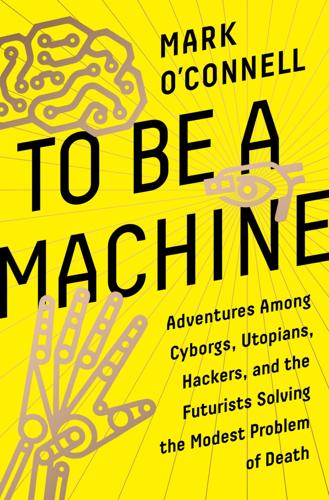
To Be a Machine: Adventures Among Cyborgs, Utopians, Hackers, and the Futurists Solving the Modest Problem of Death
by
Mark O'Connell
Published 28 Feb 2017
In high school he read scientific textbooks for pure diversion, and kept a scrapbook of equations he found especially stimulating; he was excited, he said, by the movement of the logic, the lockstep progression of the thought—by the abstract symbols themselves more than the actual things they signified. One especially rich source of such equations was a book called The Anthropic Cosmological Principle by John D. Barrow and Frank J. Tipler. At first, Anders read the book primarily for these tantalizing calculations—“weird formulas,” as he put it, “about things like electrons orbiting hydrogen atoms in higher dimensions”—but like a kid with a copy of Playboy who eventually turns his attention to a Nabokov story, he began to take an interest in the text that surrounded them.
…
Dialectic of Enlightenment: Philosophical Fragments. Stanford: Stanford University Press, 2002. Arendt, Hannah. The Human Condition. Chicago: University of Chicago Press, 1989. Armstrong, Stuart. Smarter than Us: The Rise of Machine Intelligence. Berkeley: MIRI, 2014. Barrow, John D., and Frank J. Tipler. The Anthropic Cosmological Principle. Oxford: Oxford University Press, 1986. Becker, Ernest. The Denial of Death. New York: Free Press, 1973. Blackford, Russell, and Damien Broderick. Intelligence Unbound: The Future of Uploaded and Machine Minds. Chichester: John Wiley & Sons, 2014. Bostrom, Nick. Superintelligence: Paths, Dangers, Strategies.
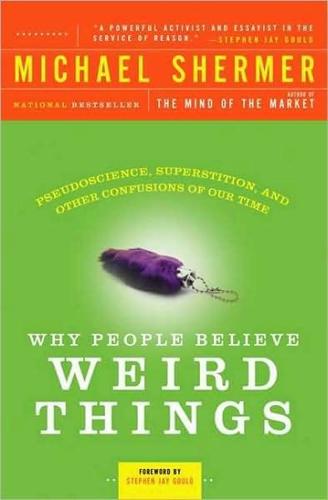
Why People Believe Weird Things: Pseudoscience, Superstition, and Other Confusions of Our Time
by
Michael Shermer
Published 1 Jan 1997
The Faith of a Physicist (1994) by the Cambridge University theoretical physicist turned Anglican priest, John Polkinghorne, argues that physics proves the Nicene Creed, which is based on a fourth-century formula of Christian faith. In 1995, physicist Paul Davies won the $1 million Templeton Prize for the advancement of religion, in part for his 1991 book, The Mind of God. The nod for the most serious attempts, however, has to go to John Barrow and Frank Tipler's 1986 Anthropic Cosmological Principle and Frank Tipler's 1994 The Physics of Immortality: Modern Cosmology, God and the Resurrection of the Dead. In the first book, the authors claim to prove that the universe was intelligently designed and thus there is an intelligent designer (God); in the second, Tipler hopes to convince readers that they and everyone else will be resurrected in the future by a supercomputer.
…
In 1976, Tipler began postdoctoral work at the University of California, Berkeley, where he met British cosmologist John Barrow, also a postdoc. Tipler and Barrow discussed a manuscript by Brandon Carter which described the Anthropic Principle. "We thought it would be a good idea to take the idea and expand it out. And that became the Anthropic Cosmological Principle. In our last chapter we combined the idea from Freeman Dyson [1979] of life going on forever, with physical reductionism and global general relativity; the Omega Point Theory then follows." Tipler's steps in reasoning sound logical, but his conclusions push the limits of science: I wanted our book to be completely general, so I said to myself, well, what about the flat universe and the closed universe [instead of an open universe]?
…
Air Photo Evidence: Auschwitz, Treblinka, Majdanek, Sobibor, Bergen Belsen, Belzec, Babi Yar, Katyn Forest. Delta, Canada: Ball Resource Services. Bank, S. P., and M. D. Kahn. 1982. The Sibling Bond. New York: Basic. Barkow, J. H., L. Cosmides, and J. Tooby. 1992. The Adapted Mind. Oxford: Oxford University Press. Barrow, J., and F. Tipler. 1986. The Anthropic Cosmological Principle. Oxford: Oxford University Press. Barston, A. 1994. Witch Craze: A New History of European Witch Hunts. New York: Pandora/HarperCollins. Bass, E., and L. Davis. 1988. The Courage to Heal: A Guide for Women Survivors of Child Sexual Abuse. New York: Reed Consumer Books. Bauer, Y. 1994. Jews for Sale?

In Our Own Image: Savior or Destroyer? The History and Future of Artificial Intelligence
by
George Zarkadakis
Published 7 Mar 2016
That intelligence cannot be a mere evolutionary accident that took place on a small blue planet on the outer ridges of an insignificant galaxy amongst the hundred billion galaxies that make up the observable universe. That intelligence is the pre-ordained seed of something bigger. But what could this be? In their book The Anthropic Cosmological Principle, Barrow and Tippler imagine a far distant future when the universe is slowly dying. This is happening because of a law in thermodynamics called entropy. This law states that heat flows from the hotter body to the cooler one – and you can test the law yourself anytime by wrapping your hands around a warm cup of tea.
…
(Socrates suggests their moral training and proper cultivation of their souls.) 18As documented in the Apostle’s Creed recited by millions of Christians during Mass: ‘I believe … in the resurrection of the body’. 19Kurzweil, R. (2005), The Singularity Is Near. London: Viking. 20Barrow, J. D., and Tippler, F. J. (1988), The Anthropic Cosmological Principle. Oxford: Oxford University Press. 21Bostrom, N. (2003), ‘Are you living in a computer simulation?’, Philosophical Quarterly, Vol. 53, No. 211, pp. 243–55. 22The idea of consciousness upload has been explored in several sci-fi novels and films, as for example in ‘Kill Switch’, an episode of the TV series The X-Files (written by cyberpunk pioneers William Gibson and Tom Maddox and aired in 1998).
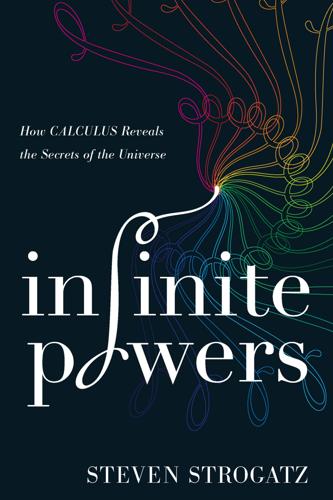
Infinite Powers: How Calculus Reveals the Secrets of the Universe
by
Steven Strogatz
Published 31 Mar 2019
page 240 © Thomas Jefferson Foundation at Monticello page 260 Image reproduced by kind permission of Rodrigo Tetsuo Argenton Notes Introduction vii “It’s the language God talks”: Wouk, The Language God Talks, 5. vii universe is deeply mathematical: For physics perspectives, see Barrow and Tipler, Anthropic Cosmological Principle; Rees, Just Six Numbers; Davies, The Goldilocks Enigma; Livio, Is God a Mathematician?; Tegmark, Our Mathematical Universe; and Carroll, The Big Picture. For a philosophy perspective, see Simon Friederich, “Fine-Tuning,” Stanford Encyclopedia of Philosophy, https://plato.stanford.edu/archives/spr2018/entries/fine-tuning/.
…
,” Notices of the American Mathematical Society 55, no. 2 (2008): 226–29. http://www.ams.org/notices/200802/tx080200226p.pdf. Ball, Philip. “A Century Ago Einstein Sparked the Notion of the Laser.” Physics World (August 31, 2017). https://physicsworld.com/a/a-century-ago-einstein-sparked-the-notion-of-the-laser/. Barrow, John D., and Frank J. Tipler. The Anthropic Cosmological Principle. New York: Oxford University Press, 1986. Bates, Andrew D., and Anthony Maxwell. DNA Topology. New York: Oxford University Press, 2005. Bolt, Usain. Faster than Lightning: My Autobiography. New York: HarperSport, 2013. Boyer, Carl B. The History of the Calculus and Its Conceptual Development.

Double Helix
by
James D. Watson
and
Gunther S. Stent
Published 1 Jan 1968
Soon afterwards, however, the suspicion that the regularities were important clicked inside his head as the result of several conversations with the young theoretical chemist John Griffith. One occurred while they were drinking beer after an evening talk by the astronomer Tommy Gold on “the perfect cosmological principle.” Tommy’s facility for making a far-out idea seem plausible set Francis to wondering whether an argument could be made for a “perfect biological principle.” Knowing that Griffith was interested in theoretical schemes for gene replication, he popped out with the idea that the perfect biological principle was the self-replication of the gene—that is, the ability of a gene to be exactly copied when the chromosome number doubles during cell division.

Giving the Devil His Due: Reflections of a Scientific Humanist
by
Michael Shermer
Published 8 Apr 2020
According to England’s Astronomer Royal Sir Martin Rees, there are at least six constituents that are necessary for “our emergence from a simple Big Bang,” including (1) Ω (omega), the amount of matter in the universe = 1: if Ω were greater than 1, it would have collapsed long ago, and, if Ω were less than 1, no galaxies would have formed. (2) ε (epsilon), how firmly atomic nuclei bind together = 0.007: if ε were even fractionally different, matter could not exist. (3) D, the number of dimensions in which we live = 3. (4) N, the ratio of the strength of electromagnetism to that of gravity = 1039: if N were smaller, the universe would be either too young or too small for life to form. (5) Q, the fabric of the universe = 1/100,000: if Q were smaller, the universe would be featureless, and, if Q were larger, the universe would be dominated by giant black holes. (6) λ (lambda), the cosmological constant, or “antigravity” force that is causing the universe to expand at an accelerating rate = 0.7: if λ were larger, it would have prevented stars and galaxies from forming.2 The most common reason invoked for our universe’s “fine-tuning” is the “anthropic principle,” most forcefully argued by the physicists John Barrow and Frank Tipler in their 1986 book The Anthropic Cosmological Principle: It is not only man that is adapted to the universe. The universe is adapted to man. Imagine a universe in which one or another of the fundamental dimensionless constants of physics is altered by a few percent one way or the other? Man could never come into being in such a universe. That is the central point of the anthropic principle.
…
https://bit.ly/2Ge2Awn Chapter 11 Why Is There Something Rather Than Nothing? 1. Hawking, Stephen. 1988. A Brief History of Time. New York: Bantam Books, 190. 2. Rees, Martin. 2000. Just Six Numbers: The Deep Forces That Shape the Universe. New York: Basic Books. 3. Barrow, John D. and Frank Tipler. 1988. The Anthropic Cosmological Principle. Oxford: Oxford University Press, vii. 4. Leslie, John and Robert Lawrence Kuhn. 2013. The Mystery of Existence: Why is There Anything at All? Wiley-Blackwell. See also Holt, Jim. 2012. Why Does the World Exist: An Existential Detective Story. New York: Liveright. 5. Kuhn, Robert Lawrence. 2007.

Coming of Age in the Milky Way
by
Timothy Ferris
Published 30 Jun 1988
Barnes, C.A., D.D. Clayton, and D.N. Schramm, eds. Essays in Nuclear Astrophysics. London: Cambridge University Press, 1982. Barnett, Lincoln. The Universe and Dr. Einstein. New York: Sloane, 1948. Venerable popularization of relativity theory. Barrow, John D., and Frank Tipler. The Anthropic Cosmological Principle. London: Oxford University Press, 1986. Barut, Asim O., Alwyn van der Merwe, and Jean-Pierre Vigier, eds. Quantum, Space, and Time—The Quest Continues. London: Cambridge University Press, 1984. Essays in honor of de Broglie, Dirac, and Wigner. Baumgardt, Carola. Johannes Kepler, Life and letters.
…
The Discovery of Subatomic Particles. New York: Freeman, 1983. History of the origins of particle physics. —————. The First Three Minutes. New York: Basic Books, 1977. Nontechnical account of connections between particle physics and the evolution of the early universe. —————. Gravitation and Cosmology: Principles and Applications of the General Theory of Relativity. New York: Wiley, 1972. —————. The Quantum Theory of Fields. New York: Cambridge University Press, 3 vols, 1995–2000. Weisskopf, Victor. Knowledge and Wonder. Cambridge, Mass.: MIT Press, 1979. Weizsäcker, Carl Friedrich von. The History of Nature.

Stephen Hawking
by
Leonard Mlodinow
Published 8 Sep 2020
Lawyers can’t do that because, though there might exist general guiding principles, human laws are ad hoc creations and cannot be derived from each other. Nor can doctors derive the details of human anatomy from any set of first principles. That the laws of physics can is a wonder that every physicist marvels over. Stephen studied those books and papers into which our knowledge of cosmological principles was condensed, and he learned fast. He expected to die in a few years, but at least in cosmology he would be spending his time addressing questions that excited him. * * * After they were married, on Bastille Day, 1965, Stephen and Jane rented a tiny old house at 11 Little St. Mary’s Lane, near the medieval church in old Cambridge it was named for.
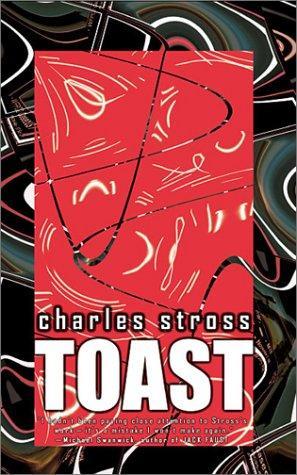
Toast
by
Stross, Charles
Published 1 Jan 2002
Ship of Fools dives headlong into the future and crashes messily up against January the First, 2000—hopefully with more grace than many of the consultants who were selling us all on doom and gloom back then. Toast takes Moore’s Law to its logical conclusion, while Antibodies cross-fertilises Vinge’s singularity with the anthropic cosmological principle and some of Moravec’s odder theories about quantum mechanics’ many universes hypothesis in an unsettling stew: but both these stories are brittle, subject to a resounding technological refutation that could happen at any moment. I wouldn’t bet on Dechlorinating the Moderator looking anything but quaint in a decade, either.

Lost in Math: How Beauty Leads Physics Astray
by
Sabine Hossenfelder
Published 11 Jun 2018
The synthesis of elements from carbon to nickel.” Astrophys J Suppl Ser. 1:121. 24. Kragh H. 2010. “When is a prediction anthropic? Fred Hoyle and the 7.65 MeV carbon resonance.” Preprint. http://philsci-archive.pitt.edu/5332. 25. See, for example, Barrow JD, Tipler FJ. 1986. The anthropic cosmological principle. Oxford, UK: Oxford University Press; Davies P. 2007. Cosmic jackpot: why our universe is just right for life. Boston: Houghton Mifflin Harcourt. 26. Harnik RD, Kribs GD, Perez G. 2006. “A universe without weak interactions.” Phys Rev D. 74:035006. arXiv:hep-ph/0604027. 27. Loeb A. 2014.

The Transhumanist Reader
by
Max More
and
Natasha Vita-More
Published 4 Mar 2013
The earliest story I know about intelligence amplification via computer/brain linkage. Asimov, Isaac (1942) “Runaround.” Astounding Science Fiction (March), p. 94. Reprinted in Isaac Asimov (1990) Robot Visions. New York: ROC, where Asimov also describes the development of his robotics stories. Barrow, John D. and Tipler, Frank J. (1986) The Anthropic Cosmological Principle. Oxford: Oxford University Press. Conrad, Michael, et al. (1989) “Towards an Artificial Brain.” BioSystems 23, pp. 175–218. Dyson, Freeman (1979) “Physics and Biology in an Open Universe.” Review of Modern Physics 51, pp. 447–460. Herbert, Frank (1985) Dune. New York: Berkley Books. This novel was serialized in Analog Science Fiction-Science Fact in the 1960s.
…
Bettencourt, Luís M.A., Lobo, José, Helbing, Dirk, Kühnert, Christian, and West, Geoffrey B. (2007) “Growth, Innovation, Scaling, and the Pace of Life in Cities.” Proceedings of the National Academy of Sciences 104/17 (April), pp. 7301–7306. Bostrom, Nick (1998) “Singularity and Predictability.” http://hanson.gmu.edu/vc.html#bostrom. Barrow, J.D. and Tipler, F.J. (1986) The Anthropic Cosmological Principle. Oxford: Oxford University Press. Chaisson, Eric J. (1998) “The Cosmic Environment for the Growth of Complexity.” Biosystems 46/1–2, pp. 13–19. Flake, Gary William (2006) “How I Learned to Stop Worrying and Love the Imminent Internet Singularity.” Proceedings of the 15th ACM International Conference on Information and Knowledge Management, Arlington, VA, p. 2.

Pale Blue Dot: A Vision of the Human Future in Space
by
Carl Sagan
Published 8 Sep 1997
Pasachoff, Astronomy: From Earth to the Universe (New York: Saunders, 1993). Carl Sagan, Cosmos (New York: Random House, 1980). Konstantin Tsiolkovsky, The Call of the Cosmos (Moscow: Foreign Languages Publishing House, 1960) (English translation). CHAPTER 3, THE GREAT DEMOTIONS John D. Barron and Frank J. Tipler, The Anthropic Cosmological Principle (New York: Oxford University Press, 1986). A. Linde, Particle Physics and Inflationary Cosmology (Harwood Academy Publishers, 1991). B. Stewart, "Science or Animism?," Creation /Evolution, vol. 12, no. 1 (1992), pp. 18-19. Steven Weinberg, Dreams of a Final Theory (New York: Vintage Books, 1994).
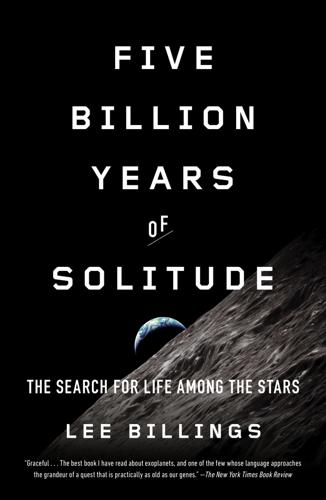
Five Billion Years of Solitude: The Search for Life Among the Stars
by
Lee Billings
Published 2 Oct 2013
Paul Butler, and Nader Haghighipour, “GJ 581 Update: Additional Evidence for a Super-Earth in the Habitable Zone,” Astronomische Nachrichten, vol. 333 (2012), pp. 561–75. CHAPTER 4: The Worth of a World Fred Adams and Greg Laughlin, The Five Ages of the Universe: Inside the Physics of Eternity (New York: Free Press, 1999). John D. Barrow and Frank J. Tipler, The Anthropic Cosmological Principle (New York: Oxford University Press, 1986). Marcia Bartusiak, The Day We Found the Universe (New York: Pantheon, 2009). Lee Billings, “Cosmic Commodities: How much is a new planet worth?” Boingboing.net, February 3, 2011. http://boingboing.net/2011/02/03/cosmic-commodities-h.html. Bill Bryson, A Short History of Nearly Everything (New York: Broadway Books, 2003).
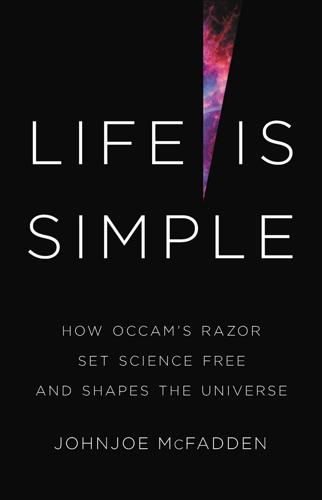
Life Is Simple: How Occam's Razor Set Science Free and Shapes the Universe
by
Johnjoe McFadden
Published 27 Sep 2021
K., ‘Rotation of the Andromeda Nebula From a Spectroscopic Survey of Emission Regions’, Astrophysical Journal, 159, 379 (1970). 6. Oaknin, D. H., and Zhitnitsky, A., ‘Baryon Asymmetry, Dark Matter, and Quantum Chromodynamics’, Physical Review D, 71, 023519 (2005). 7. Barrow, J. D., and Tipler, F. J., The Anthropic Cosmological Principle (Clarendon Press, 1986). 8. Smolin, L., The Life of the Cosmos (Oxford University Press, 1999). 9. Smolin, L., Time Reborn: From the Crisis in Physics to the Future of the Universe (Houghton Mifflin Harcourt, 2013). 10. Lloyd, S., Programming the Universe: A Quantum Computer Scientist Takes on the Cosmos (Knopf, 2006). 11.

What to Think About Machines That Think: Today's Leading Thinkers on the Age of Machine Intelligence
by
John Brockman
Published 5 Oct 2015
After all, those microbes may still be closer to our present selves—representatives of life’s first generation rooted in the geochemistry of planet Earth. IF YOU CAN’T BEAT ’EM, JOIN ’EM FRANK TIPLER Professor of mathematical physics, Tulane University; coauthor (with John D. Barrow), The Anthropic Cosmological Principle; author, The Physics of Immortality The Earth is doomed. Astronomers have known for decades that the sun will one day engulf the Earth, destroying the entire biosphere—assuming that intelligent life has not left the Earth before this happens. Humans aren’t adapted to living away from the Earth; indeed, no carbon-based metazoan life-form is.

The Case for Space: How the Revolution in Spaceflight Opens Up a Future of Limitless Possibility
by
Robert Zubrin
Published 30 Apr 2019
Robert Zubrin, “Interstellar Communications Using Microbial Data Storage: Implications for SETI,” Journal of the British Interplanetary Society 70, no. 5/6 (May/June 2017). 17. Paul Davies, The Goldilocks Enigma: Why Is the Universe Just Right for Life? (New York: Mariner Books, 2008). 18. John Barrow and Frank Tipler, The Anthropic Cosmological Principle (New York: Oxford University Press, 1988). 19. Lee Smolin, The Life of the Cosmos (New York: Oxford University Press, 1997). 20. Stuart Kauffman, At Home in the Universe: The Search for the Laws of Self-Organization and Complexity (New York: Oxford University Press, 1996). 21. I. S. Shklovskii and Carl Sagan, Intelligent Life in the Universe (New York: Delta Books, 1966).
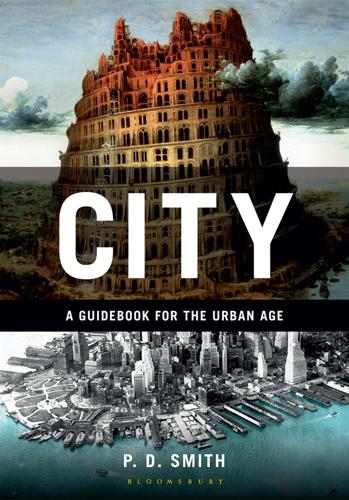
City: A Guidebook for the Urban Age
by
P. D. Smith
Published 19 Jun 2012
Even in the earliest cities, greenery was used to soften the rectilinear forms of major structures. The ziggurat at Ur had trees on its upper terraces and King Nebuchadnezzar’s palace was greened by the famous Hanging Gardens of Babylon. Beijing has been an urban centre for far longer than London – some four thousand years. Chinese imperial cities were designed according to strict cosmological principles. From the first millennium bc, royal parks in Chinese cities were located to the north of the palace. The summer palace of Yuanmingyuan in the north-west of the city was begun in 1709 by Kangxi and expanded by subsequent emperors. It formed the largest royal garden in the world, with two hundred pavilions and temples set in an artificial landscape of lakes and gentle hills.
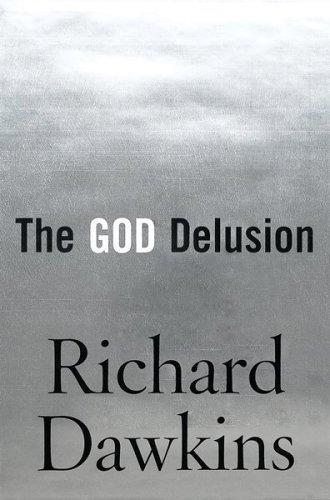
The God Delusion
by
Richard Dawkins
Published 12 Sep 2006
Barber, N. (1988). Lords of the Golden Horn. London: Arrow. Barker, D. (1992). Losing Faith in Faith. Madison, WI: Freedom From Religion Foundation. Barker, E. (1984). The Making of a Moonie: Brainwashing or Choice? Oxford: Blackwell. Barrow, J. D. and Tipler, F. J. (1988). The Anthropic Cosmological Principle. New York: Oxford University Press. Baynes, N. H., ed. (1942). The Speeches of Adolf Hitler, vol. 1. Oxford: Oxford University Press. Behe, M. J. (1996). Darwin’s Black Box. New York: Simon & Schuster. Beit-Hallahmi, B. and Argyle, M. (1997). The Psychology of Religious Behaviour, Belief and Experience.
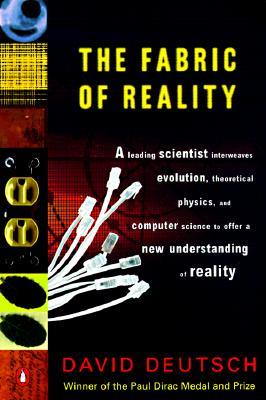
The Fabric of Reality
by
David Deutsch
Published 31 Mar 2012
Hogan, The Proteus Operation, Baen Books, 1986, Century Publishing, 1986. [Fiction!] Bryan Magee, Popper, Fontana, 1973, Viking Penguin, 1995. Karl Popper, Conjectures and Refutations, Routledge, 1963, HarperCollins, 1995. Karl Popper, The Myth of the Framework, Routledge, 1992. FURTHER READING John Barrow and Frank Tipler, The Anthropic Cosmological Principle, Clarendon Press, 1986. Charles H. Bennett, Gilles Brassard and Artur K. Ekert, 'Quantum Cryptography', Scientific American, October 1992. {367} Jacob Bronowski, The Ascent of Man, BBC Publications, 1981, Little Brown, 1976. Julian Brown, 'A Quantum Revolution for Computing', New Scientist, 24 September 1994.
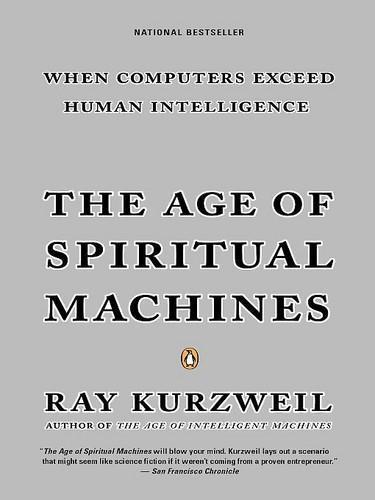
The Age of Spiritual Machines: When Computers Exceed Human Intelligence
by
Ray Kurzweil
Published 31 Dec 1998
Cambridge: Cambridge University Press, 1985. Barrett, Paul H., ed. The Collected Papers of Charles Darwin. Vols. 1 and 2. Chicago: University of Chicago Press, 1977. Barrow, John. Theories of Everything. Oxford: Oxford University Press, 1991. Barrow, John D. and Frank J. Tipler. The Anthropic Cosmological Principle. Oxford: Oxford University Press, 1986. Bartee, Thomas C., ed. Digital Communications. Indianapolis, IN: Howard W Sams and Company, 1986. Basalla, George. The Evolution of Technology. Cambridge: Cambridge University Press, 1988. Bashe, Charles J., Lyle R. Johnson, John H. Palmer, and Emerson W Pugh.

Algorithms to Live By: The Computer Science of Human Decisions
by
Brian Christian
and
Tom Griffiths
Published 4 Apr 2016
Garey, Michael R., and David S. Johnson. Computers and Intractability: A Guide to NP-Completeness. New York: W. H. Freeman, 1979. Garfield, Eugene. “Recognizing the Role of Chance.” Scientist 2, no. 8 (1988): 10. Garrett, A. J. M., and P. Coles. “Bayesian Inductive Inference and the Anthropic Cosmological Principle.” Comments on Astrophysics. 17 (1993): 23–47. Gasarch, William I. “The P =? NP Poll.” SIGACT News 33, no. 2 (2002): 34–47. Gauthier, David P. Morals by Agreement. New York: Oxford University Press, 1985. Geman, Stuart, Elie Bienenstock, and René Doursat. “Neural Networks and the Bias/Variance Dilemma.”
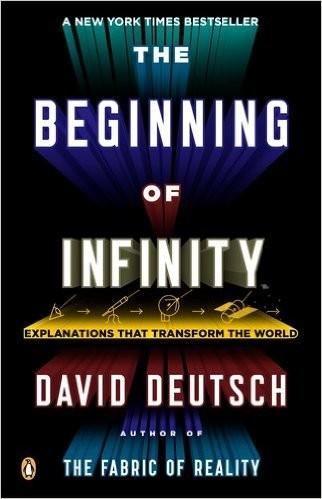
The Beginning of Infinity: Explanations That Transform the World
by
David Deutsch
Published 30 Jun 2011
Bibliography Everyone should read these Jacob Bronowski, The Ascent of Man (BBC Publications, 1973) Jacob Bronowski, Science and Human Values (Harper & Row, 1956) Richard Byrne, ‘Imitation as Behaviour Parsing’, Philosophical Transactions of the Royal Society B358 (2003) Richard Dawkins, The Selfish Gene (Oxford University Press, 1976) David Deutsch, ‘Comment on Michael Lockwood, “‘Many Minds’ Interpretations of Quantum Mechanics”’, British Journal for the Philosophy of Science 47, 2 (1996) David Deutsch, The Fabric of Reality (Allen Lane, 1997) Karl Popper, Conjectures and Refutations (Routledge, 1963) Karl Popper, The Open Society and Its Enemies (Routledge, 1945) Further reading John Barrow and Frank Tipler, The Anthropic Cosmological Principle (Clarendon Press, 1986) Susan Blackmore, The Meme Machine (Oxford University Press, 1999) Nick Bostrom, ‘Are You Living in a Computer Simulation?’, Philosophical Quarterly 53 (2003) David Deutsch, ‘Apart from Universes’, in S. Saunders, J. Barrett, A. Kent and D. Wallace, eds., Many Worlds?

The Great Leveler: Violence and the History of Inequality From the Stone Age to the Twenty-First Century
by
Walter Scheidel
Published 17 Jan 2017
Located at an altitude of almost 13,000 feet close to Lake Titicaca in the Andean altiplano, the city of Tiwanaku became the center of an empire that expanded from about 400 CE onward and lasted into the tenth century CE. In its mature imperial form, the capital had been carefully designed as an imposing ceremonial core, spatially aligned according to cosmological principles and surrounded by a huge moat that restricted access and that was meant to give the center the appearance of a sacred island. This enclosed area not only contained the state’s principal main ceremonial edifices but also accommodated numerous residences for rulers and the associated elite, and even grave sites.

The Singularity Is Near: When Humans Transcend Biology
by
Ray Kurzweil
Published 14 Jul 2005
The anthropic principle comes up again in the context of contemporary cosmology theories that posit multiple universes (see notes 8 and 9, below), each with its own set of laws. Only in a universe in which the laws allowed thinking beings to exist could we be here asking these questions. One of the seminal texts in the discussion is John Barrow and Frank Tipler, The Anthropic Cosmological Principle (New York: Oxford University Press, 1988). See also Steven Weinberg, "A Designer Universe?" at http://www.physlink.coml Education/ essay_weinberg.cfm. 8. According to some cosmological theories, there were multiple big bangs, not one, leading to multiple universes (parallel multiverses or "bubbles").

Global Catastrophic Risks
by
Nick Bostrom
and
Milan M. Cirkovic
Published 2 Jul 2008
Use of class A and class C stellar engines to control Sun's movement in the galaxy. Acta Astronautica, 58, 1 1 9-129. B alashov, Yu. (1991). Resource Letter AP- 1 : The Anthropic Principle. Am. ]. Phys., 59, 1069-1076. Ball, ).A. ( 1973). The Zoo hypothesis. Icarus, 19, 347-349. Barrow, J . D . and Tipler, F.). (1986) . The Anthropic Cosmological Principle (New York: Oxford University Press). Baxter, S. (2000). The planetarium hypothesis: a resolution of the Fermi paradox. ]. Brit. Interplan. Soc., 54, 21 0-2 16. Beauge, C., Callegari, N ., Ferraz-Mello, S . , and Michtchenko, T.A. (2005) . Resonance and stability of extra-solar planetary systems.